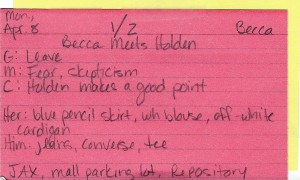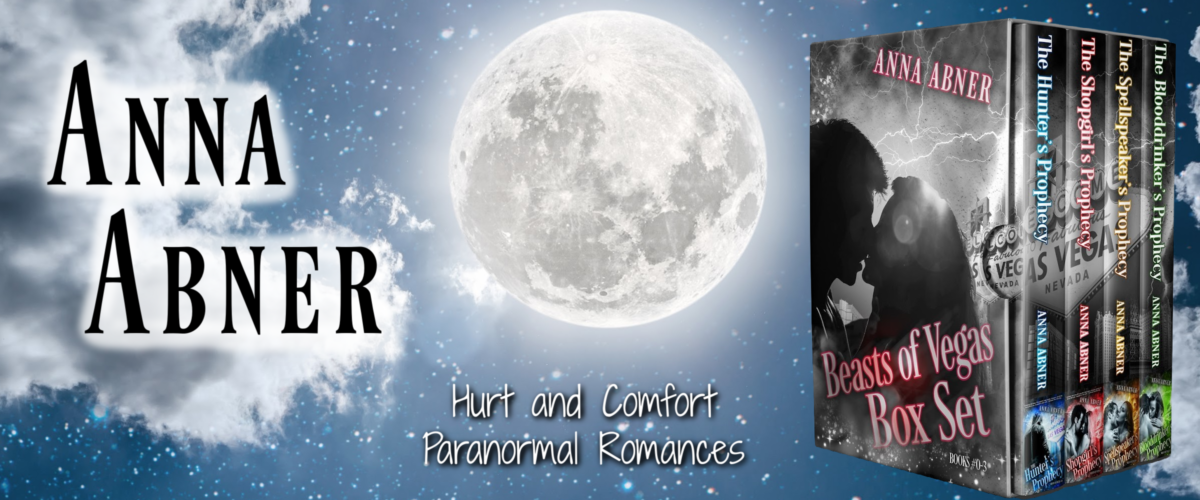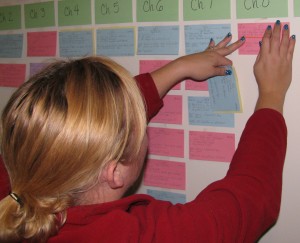Scene Cards
Or, How to Fine Tune Scenes During the Revision Stage
There are dozens of types of scene cards and twice as many ways to use them to improve your writing, either in pre-writing or in the editing stage. I took ideas from different sources and designed a scene card that suits my style perfectly. If you’re having trouble visualizing how each individual part of your story works together as a whole, try this.
Each scene gets its own card. Each POV (point of view) character gets his or her own color. Blue for my hero and pink for my heroine (to make it simple). Purple or green for my villain or any secondary character with their own POV. Then, because my novel, Spell of Summoning, is a paranormal romance I also wanted to track how often magic was used or how often a character communicated with a spirit. So I taped a yellow card behind any scene that had magic in it.
Now comes the time consuming part of this exercise. Starting from the beginning of your manuscript, read each scene and note the following details:
- The chapter number / the scene number;
- The date the scene takes place in the story;
- The POV character;
- A quick summarizing title for the scene;
- The POV character’s goal in the scene;
- The POV character’s motivation for that goal in this scene;
- The conflict that keeps the POV character from reaching their scene goal;
- The main characters’ clothing or hair style in this scene;
- The setting.
Here is an example from Spell of Summoning:

I included notes on costume because I never want to forget my hero wore a charcoal gray suit and black tie in the morning and then pulled off a black suit and red tie at the end of the day. Keeping the information on my scene card makes it easier for me to track costumes through multiple scenes in multiple locations.
The GMC (Goal-Motivation-Conflict) on each card is simplified. In my more elaborate pre-writing notes I have written both external and internal GMC for each character in each scene, but the size of the card does not allow me to express all this. Instead, I jot down easy to remember notes that trigger in my head the more complex workings of my characters. However, even having to fill out a simplified GMC chart for each POV character was extremely rewarding.
For example, I got to one scene around the middle of the book that had no conflict at all. I had written a cute little scene where Rebecca is flinging witty dialogue at her receptionist as she marches through her office. When I tried to write her GMC I had quick answers for her goal and her motivation, but I couldn’t think of a single hint of conflict. To give the scene more punch I re-wrote it, took Rebecca’s employee out of the office, and added an awkward phone call, instead. After the re-write, Rebecca doesn’t get what she wants and a new layer is added to her overall arc.
If I hadn’t practiced this scene card exercise I might not have found that scene and I imagine anyone who read the original would have skimmed quickly over it to get to something more exciting.
Finally, because I’m a visual learner, I made space on my bedroom wall and taped each scene card under its chapter heading to see the whole story. Posting the scenes helped me see which characters were getting too much attention and which weren’t getting enough. Plus, I could see how often my villain popped up with his own POV and whether I was using too much or too little magic.
This is a note-taking and scene tracking system that worked for me, and I will use it again on the sequel, Spell of Binding. If I was very organized I would be able to write out scene cards before I started writing the manuscript and lay out every scene, every chapter, and every act exactly as it needs to be in the finished novel. But I’m not. Maybe that will be my next writing goal.
<3 Anna


